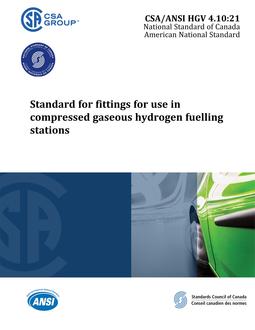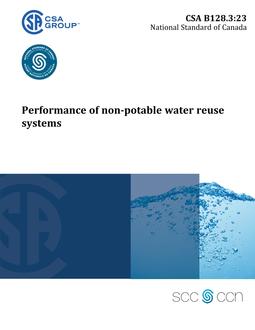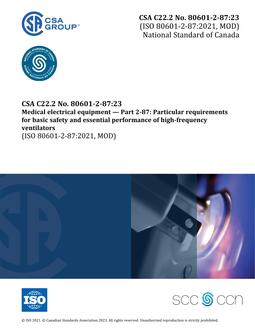
CSA ANSI HGV 4.10:21
Click here to purchase
Preface:
This is the second edition of CSA/ANSI HGV 4.10, Standard for fittings for use in compressed gaseous hydrogen fuelling stations. It supersedes the previous edition published in 2013.
This edition of CSA HGV 4.10 has been updated to include requirements for new technology and has been reformatted to comply with current editorial practices at CSA Group.
CSA Group acknowledges that the development of this Standard was made possible, in part, by the financial support of Natural Resources Canada.
This Standard has been developed in compliance with Standards Council of Canada requirements for National Standards of Canada. It has been published as a National Standard of Canada by CSA Group.
This Standard has been developed in compliance with the American National Standards Institute (ANSI).
Scope:
1.1 General
1.1.1 Scope of this Standard
This Standard specifies methods for testing and evaluating fittings for use with compressed hydrogen gas and hydrogen-rich gas mixtures.
1.1.2 Applicability of this Standard
This Standard was developed primarily for hydrogen fuelling station applications. However, this does not preclude other industries from adopting this Standard for their own use.
1.2 Fitting types
In this Standard, the term “fittings” includes connectors, stud ends for ports, tees, elbows, crosses, adaptors and manifold blocks.
1.3 Exclusions
This Standard does not apply to stand-alone components, such as
a) quick action couplings (i.e., quick connects), flanges, or weld fittings; and
b) fittings for handling liquid hydrogen.
1.4 New vs. historical fitting designs
This Standard is intended for new fitting designs and existing designs made with new materials. It is not intended for existing fitting designs with history of use, fittings made of existing materials with history of use, or fittings qualified by industry-recognized organizations (e.g., ASME, CGA, MSS, and SAE) for use in compressed gaseous hydrogen applications.
Note: However, such exclusions do not preclude manufacturers from using this Standard for certification purposes for existing fitting configurations with history of use.
1.5 Precedence of requirements
Application-specific standards supersede the requirements of this Standard.
1.6 Terminology
In this Standard, “shall” is used to express a requirement, i.e., a provision that the user is obliged to satisfy in order to comply with the Standard; “should” is used to express a recommendation or that which is advised but not required; and “may” is used to express an option or that which is permissible within the limits of the Standard. Notes accompanying clauses do not include requirements or alternative requirements; the purpose of a note accompanying a clause is to separate the text explanatory or informative material. Notes to tables and figures are considered part of the table or figure and may be written as requirements. Annexes are designated normative (mandatory) or informative (non-mandatory) to define their application.
1.7 Dimensions
The values given in SI units are the units of record for this Standard. The values given in parentheses are for information and comparison only. Unless otherwise stated, all pressures noted within this Standard are gauge pressures.
Product Details
- Edition:
- 2nd
- Published:
- 01/01/2021
- ISBN(s):
- 9781488331701
- ANSI:
- ANSI Approved
- Number of Pages:
- 32
- File Size:
- 1 file , 760 KB
- Product Code(s):
- 2428481, 2428481


